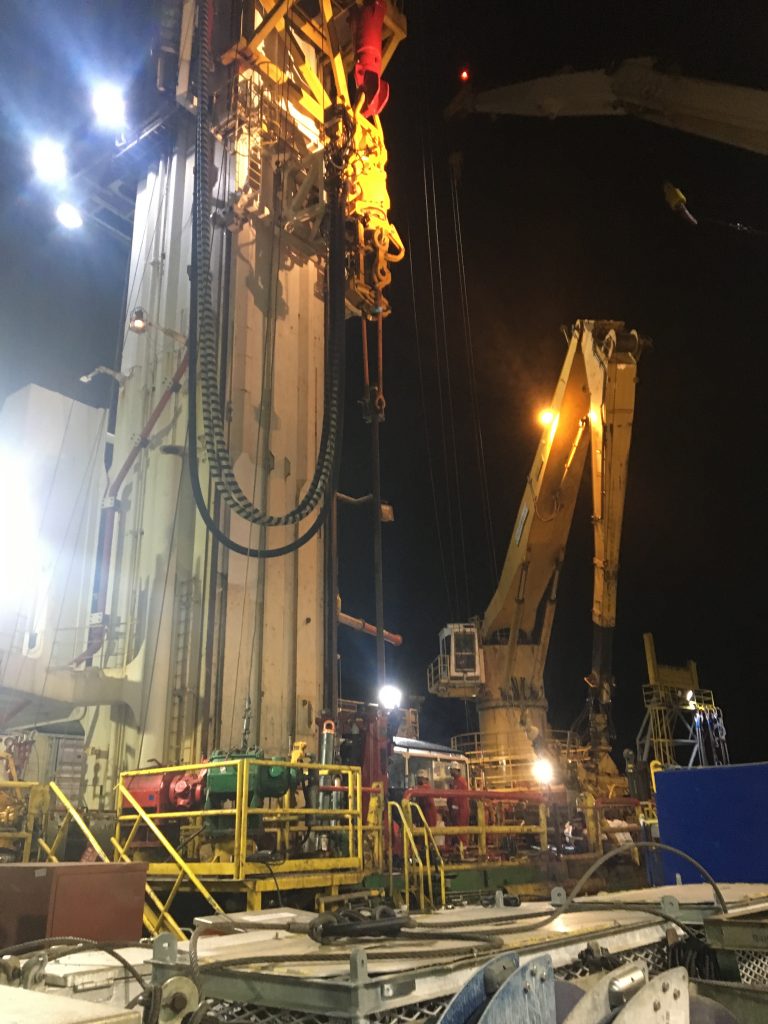This post is a part of a series from the Genesis of Methane Hydrate in Coarse-Grained Systems: Northern Gulf of Mexico Slope (GOM^2) expedition.
Almost half way there! Last night, after a few minor glitches, we completed a flow test on the Pressure Core Tool with Ball (PCTB).
The PCTB is a pretty special tool (only one of its kind!). To use it, we lower it on a cable down the center of the drill string, where it catches on a couple of internal collars so it is flush with the drill bit. As the tool drills into the formation it extracts a ~2” diameter core that feeds into a liner inside the tool. Then we give the tool a little tug via the cable, snapping a ball valve shut sealing in the core. Not but a moment later an internal reservoir of pressurized nitrogen is pushed into the core to ~400 psi above in-situ pressure. As soon as the sample is pulled back to the rig floor we set it into the cold shuck—a PCTB-sized refrigerator—to cool the sample after it is warmed by the seawater on its way up. Finally, we extract the core using purpose-built pressurized equipment in a refrigerated container for future analysis.

Back to the flow test. We completed a flow test to ensure that when the tool is flush with the drill bit, water passes around it without building up enough pressure to damage it. And now, we’re tripping pipe, which is a fancy way of saying we are building out the drill string in order to reach the seafloor and begin drilling. Presently we’re at 2300’ below sea level with about 4000’ more to go. After nearly two weeks on the rig, things are starting to get exciting.
In other exciting news, the rest of the science team arrived via helicopter yesterday afternoon, joining the five of us from UT and Pettigrew Engineering. We now have several more from UT, with additional researchers from The Ohio State University, US Geological Survey, Lamont-Doherty Earth Observatory, and National Energy Technology Laboratory.
Our team is in place. The tool is ready to go. The rig is tripping pipe. Time to core hydrates.

